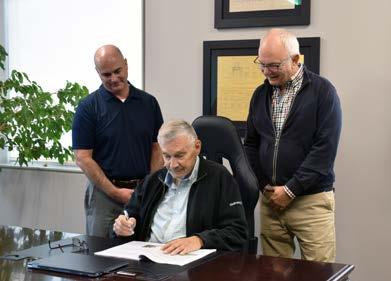






1937 - 2023

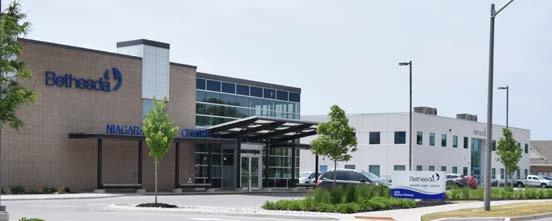
Bethesda is governed by a nine member Board of Directors. The Wiebe family did not have a Board for their first few years in Campden. In the early 1940’s the Canadian Conference of Mennonite Brethren Churches assumed ownership (later transferred to Ontario Conference of Mennonite Brethren Churches). For 70 plus years the Conferences appointed Bethesda’s Boards. Conference ownership ended in 2018.
The current Board includes men and women from several Niagara denominations. Skill sets include legal, accounting, business, finance, teaching and administration.
The Wiebes started out with one ‘patient’. By 2023 our programs supported over 3,000 adults, youth and children with intellectual and/or developmental disabilities. People receive professional and compassionate care from our 500 remarkable staff.
The primary responsibility of the board of a charitable organization is to ensure that all legal requirements and fiduciary responsibilities are practiced in the best interests of the organization. Our volunteer Board appoints a Chief Executive Officer (CEO) and supervises him by providing oversight and direction. The CEO is responsible for the day-to-day work of all programs. The Board meets several times a year and four Executive members meet more often. The Board President and the CEO meet frequently.
In 1959 the Ontario government began financially assisting Bethesda programs. Today the government provides funds that cover most of Bethesda’s program costs. There are, however, several families in Niagara who do not yet receive this funding. Bethesda has several fundraising initiatives and money raised can help many of these families.
2001 was a momentous year for Bethesda. We began serving children and youth with intellectual and/or developmental disabilities. Our Children and Youth Services Program expanded quickly. A successful fundraising campaign (2015-2018) raised more than $1,000,000 and allowed us to proceed with building the Niagara Family Centre. Today, we have 1,500 adults and 1,500 children, youth and families receiving services.
My involvement with people with developmental disabilities began in 1966. I joined the Bethesda Board in 1995. Bethesda had encountered significant administrative issues. A new Board and a new CEO soon had the organization back on track. Programs expanded and many new people were welcomed. Bethesda continues to grow, and today is a leading Ontario organization providing help to people with special needs.
Bethesda encourages individuals, service clubs, other charities, businesses and churches to help us continue serving children, youth, adults and their families. With that help we will continue to make a positive difference in the lives of those we serve.
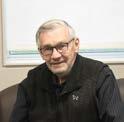
Sincerely,
William Jackson
Bethesda Board President
June 2023
Along with Bill Jackson, I would like to take this opportunity to recognize the amazing history that Bethesda has enjoyed over the past 86 years. The foundation established by the Wiebe family has continued to this day; a foundation built on God’s rich promises.
It is our sincere hope that we will always recognize our roots, where we came from is so important when identifying where we want to go. The foundational principles of Bethesda must continue to inform us as to who we are.
As we reflect on Bethesda’s amazing history, we must use this as our guiding light to ensure the future of Bethesda is just as remarkable. We will do this through remaining steadfast to the principles engrained into the fabric of the organization over the past 86 years.
Bethesda began in the service of people and continues to place people, both those we support and those in our employ, first. Our people are our Bethesda family. We continue to believe that all people should be included in society and receive compassionate supports that respect their privacy, choices, decisions, and rights. It is through quality, innovative supports and services, and collaboration, working with
people, their families, our partners, and communities that lead us to successful outcomes and, most importantly, the enrichment of people’s lives.
As you read through the following pages and enjoy the photos, it is my hope that you will be moved by the support given to people, in the Spirit of Christ.
Enjoy!

Sincerely,
Paul McGowan Chief Executive Officer
June 2023
William R. (Bill) Jackson President Doug Peters Vice Chair

Bill is a retired Senior Commissioner for the Immigration and Refugee Board. Bill joined Bethesda’s Board in 1996 and has been the Chair since 2006. A proud recipient of the June Callwood Outstanding Achievement Award for Voluntarism, Bill has also been involved with Friends of the Children of Haiti, International Child Care and Hôpital Albert Schweitzer, Haiti, to name a few.
Bill’s greatest joy in recent years has been spending time with his wife and having more time to spend with his family and friends.
Bill has been a prominent supporter of the Developmental Services sector since 1966. He admires the work of the many dedicated staff at Bethesda who are dealing with very challenging situations.

Doug is a professional engineer specializing in infrastructure design and project management, and is the President of Quartek Group Inc. in Niagara. Doug joined the Board in 2009 and enjoys serving on the Nominations and Community Outreach Committees.
Doug loves to read, travel and cycle with his wife, Sharon, and spend time with family.
Doug is passionate about serving people with special needs and supporting challenges that come Bethesda’s way when they are consistent with the organizations mission and vision, even if there is an associated risk, as there is a need that must be helped.
Kevin Stienstra Treasurer

Kevin is a tax partner in the accounting firm Grant Thornton LLP and started in the accounting profession in 2003, when he was a co-op student in the accounting program at Brock University. Kevin joined the Board in 2018 and chairs the Finance Committee.
Kevin enjoys staying active and spending time with his wife and children, whether that be travelling or coaching his children on the soccer field.
Kevin believes in the mission and vision of Bethesda and is passionate about serving and caring for others, especially those who may be less fortunate or vulnerable than ourselves.
Cheryl Tyndall Secretary
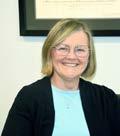
Cheryl’s education is in Science Laboratory Technology and Biology and this led her career, including quality control, teaching, research and 23 years with the Niagara Parks Commission. Cheryl joined the Board in 2019 and sits on the Community Outreach Committee.
Cheryl loves the outdoors and finds delight in the incredible beauty that surrounds us, enjoying hiking, gardening and golf. Cheryl’s heart for Bethesda stems from her personal experience, she had an older sister who had special needs from birth and as a result Cheryl grew up in a community of families who worked together to ensure their loved ones had the best quality of life.
Bill Janzen Director

Bill is the co-owner of Lost ‘n Found Yoga in St. Catharines. His wife, April, runs the studio and Bill manages the back end functions. Bill joined the Board in 2016 and sits on the Finance and Policy Committees.
Bill enjoys spending time with his wife and 3 children with sports and activities. He enjoys biking, hockey and reading.
Bill believes that the work Bethesda does fills some extremely important needs in our community, having previously experienced Bethesda’s services first hand through supports provided to his son who has Down Syndrome.
Brenda tenOever Boks Director
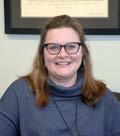
Brenda is the Student Support Services Director at Beacon Christian School in St. Catharines and has worked with educational assistants, teachers, and children of varying abilities from ages 4-14.
Brenda joined the Board in 2019 and sits on the Community Outreach Committee.
Brenda loves to be with her family and boxer dog and enjoys shopping, time with friends and a good book.
Having previously worked for Bethesda, Brenda was inspired to try and find ways to meet and respect individual needs of all persons, regardless of ability.
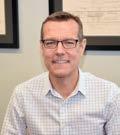
Tom is a lawyer, practicing in the area of business law, and a partner at the law firm Sullivan Mahoney LLP in St. Catharines.
Having previously been on the Board for 16 years, Tom rejoined the Board of Directors in 2021.
Tom enjoys spending time with his family, reading and sports, and is passionate about Bethesda’s mission and goals, especially helping those in need of our support.
Beth Vanstaalduinen Director
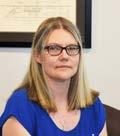
Beth is a teacher at Althorp Montessori School with a supervisor role. After supply teaching experience at the school, the Montessori philosophy of education encouraged Beth to return to school to get her Montessori teacher’s diploma. Beth joined the Board in 2021 and is a member of the Community Outreach Committee.
Beth enjoys playing board games, doing escape rooms and hiking. Bethesda has held a special place in Beth’s heart from when her son received Intensive Behaviour Intervention (IBI). The time Beth’s son spent at Bethesda greatly impacted her family’s life. Beth recognizes the importance of working with individuals with special needs and joining the Board felt like her way of giving back to the organization that gave so much to her.
Sharron Haberfield Director
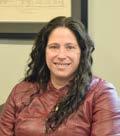
Sharron is a financial planner at RBC and works as an advocate, helping other families with financial advice around funding sources.
Having previously been on the Board for six years, Sharron rejoined the Board of Directors in 2022 and is a member of the Community Outreach Committee.
Sharron enjoys painting, camping, and para-rowing. Bethesda has supported Sharron’s two sons with behaviour supports and Supported Living. With this experience, Sharron is passionate about continuing to improve the overall supports and services provided to individuals and families, and highlighting Bethesda in the community.
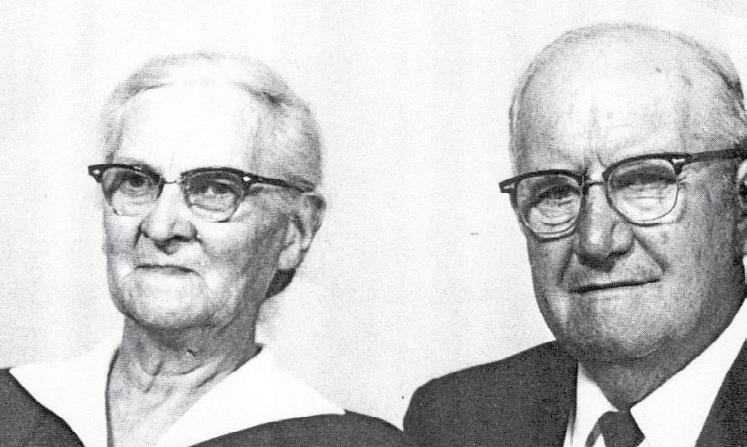

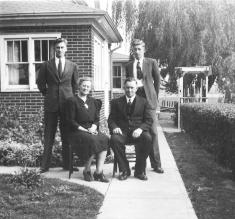
The Wiebe Family: Henry and Maria Wiebe, and their sons, Ed and Henry
First and foremost we want to recognize the people we support and our amazing staff. Bethesda wouldn’t be Bethesda without them.
Appreciation to Bill Jackson and the Bethesda Board for their vision from concept to completion.
Paul McGowan for picking up the ‘torch’, and agreeing to move Bethesda forward.
The Ministry of Children, Community and Social Services, for their historic and ongoing support of Bethesda. The partnership has resulted in the support of so many people.
Brian Davies for his past leadership, and contribution to the rich history of Bethesda and for taking on this project.
Finally, to the Wiebe family, their vision of sacrifice has helped so many people. Deep appreciation to Henry Wiebe for agreeing to review this historic account. His insights have been invaluable.
Throughout its history, Bethesda has always been about people helping people. From the outset, the founders, Rev. H.P. Wiebe and Maria Wiebe (née Unrau), prayed that this ministry would be to the honour and glory of God.
Our name is Bethesda and it means “house of mercy.” It’s a name that gives us a deep sense of our historical roots, our present purpose, and our vision for the future. In the Bible, the pool of Bethesda is a place where people with disabilities went for help and healing. As we look back, we remember those pioneers who stepped out in ministry because they had a concern for people in need. They chose the name Bethesda being mindful of Jesus’ ministry and the biblical account of the help and healing he gave to a man at the pool of Bethesda. The name Bethesda captures the founders’ motive and their manner of care. The work of Bethesda was not merely a job to be done, but a ministry to people in need to be cared for in the Spirit of Christ.
I trust as you read through the following pages and smile at the photos, you will be encouraged and motivated to make a difference in the lives of people.

Brian Davies CEO 1995
- 2023
In 1937, Bethesda officially began in Vineland (Campden), Ontario, Canada, as a private ministry of Reverend Henry and Maria Wiebe. However, the foundation for this amazing organization began many years prior. Reverend Wiebe wisely provided a history of these early years, what better way to appreciate the foundation of Bethesda then Reverend Wiebe’s summary.
“Bethenien,” a psychiatric hospital in South Russia
“In the 400 years of Mennonite history, Bethesda is unique. The institute Bethania in South Russia was the first of this kind established by Mennonites, but it was born during a time when the Mennonite people lived in relative financial ease; many wealthy landowners, factory owners, and mill operators.
The institute Bethania was erected as a result of a personal contribution of 40,000 rubel (approximately $20,000) by a certain man named “Schroeder.” The churches contributed the balance of 80,000 rubel ($40,000). The main building consisted of two main divisions; one for less emotionally disturbed patients – beds; a chapel that was also used as a dining room for staff; kitchen, laundry, living quarters for the Housefather’s office etc. A separate unit (not part of the main building) also consisted of two divisions and this operation was not included in the budget. These two divisions were designated for restless and emotionally disturbed patients, a male and female and the operating costs were financed by several
wealthy individuals. There were 15 beds in each division.
Bethesda’s beginning was different. Many of the immigrants who came from Russia were faced with a debt for their travel to Canada and everyone was concerned about getting established personally. Everyone looked to his own way under these circumstances, a young modest couple trusting the Lord who is able to help in all matters, assumed the responsibility to tackle the task. An institution of this kind was greatly needed, as the history will show.
Very few private mental hospitals were in existence. Only one in all of Canada was in operation at Guelph Ontario. This particular institution was operated on a business basis and only the most well to do people could be admitted, while Bethesda was to be considered as a charitable institution.
While a beginning such as this needs preparation, will be understandable to all.
Preparation started in Russia. In the year 1924, I was led to work at Bethania through the efforts of my close friend, David Klassen. In Bethania I learned that here there was compassion for the mentally ill, where they were formerly regarded as “insane” or “crazy”, here they were regarded as “poorest among the poor.” According to my education, I could have obtained entirely different employment, but I was motivated to serve the Lord, who had done so much for me, to help these poor people. The rate of pay was $7.50 per month. At Bethania I met my life partner, her maiden name was Magda (Maria) Unrau, and we were married. Soon after her conversion, she too has a desire to serve the Lord in a practical manner. At first she applied for service with the people with the typhoid epidemic of 1918, 1919 and 1920. Many people died as a result of the dreaded disease. After that she went to Halbstadt and graduated as registered nurse and having completed her training, was sent to Bethania for two years.
In the year 1927 the Institute Bethania was closed and the patients transferred to a Russian government operated institution. This institution was located in the vicinity of Ekaterinoslaw. When we visited them on one occasion, the patients literally ran after us, pleading that we should take them with us. The locality on which Bethania was built was to be flooded. Employees were given the choice to leave the country or move to a new locality above the area that was to be flooded. It was not difficult for us to choose to leave the country, for I had considered it for some time. The Lord gave grace and we were enabled to begin our trip to Canada July 27, 1927 and arrived in Quebec on August 27. Our first home was in Kitchener, where we enjoyed real Christian fellowship for three years. However, the damp, suffocating air in a rubber factory (Goodrich Rubber Company) was so detrimental to my health that we decided to move to a farm. In 1931 we were able to rent a farm near Stratford, Ontario. The clear air and atmosphere was good for my health. We enjoyed living on the farm and performed the work with enthusiasm.
It was during this time the Wiebe’s two children were born.
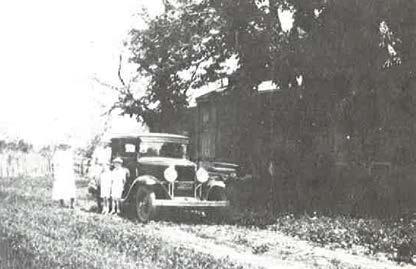
On the farm near Stratford
We soon noticed however that the physical benefit did not satisfy. For one thing, the change was too sudden. We were used to a rich social life and now we found ourselves in lonesome surroundings, with neighbours who could not understand our language and way of life, and with whom we could not enjoy Christian fellowship. In addition, we had decided to specifically serve God and now we felt as though we were transferred to a desert. What motivated us
inwardly in those days, we often used to express in song: “Here I am, my King, I dedicate myself to you – take me and use me as you will – what you consider to little, make it little for me too, what you consider great, make it great for me, that I would follow Jesus alone.” The Lord recognized the sincerity of this dedication and answered our prayers very quickly by sending a patient to us who had suffered a nervous breakdown.
In May 1932, a car approached our farm. Two men from Kitchener stepped out and informed me that a certain Mr. W. had suffered a nervous breakdown. He had been taken to the hospital in Galt, where he was diagnosed as mentally ill and the Doctor suggested that he belonged in an institution for the mentally ill. The patient was considering suicide. This would of course mean that he would have to be deported to Russia because he was not a Canadian citizen.
In those years the law stated that whoever was not a Canadian Citizen and became mentally ill would be deported immediately, unless the next of kin assumed the responsibility for the cost of care. This was an absolute impossibility for our people at that time. “Would you take this patient in? You both have experience in caring for such people.” Before we answered, my dear wife and I discussed the matter privately. In normal circumstances, the answer should have been “no.” There would certainly not be any remuneration expected. We considered our material and financial situation, and we were hard pressed. We were in the midst of the Depression and
it was difficult to make ends meet. Our two sons, whom the Lord had given to us, were at an age where they required constant supervision. Many other concerns were evident. On the other hand, here was an opportunity to offer service to suffering humanity in Christ’s name. This fact determined our decision and we took the poor man into our home. He had been a real blessing to many people when he was in good health. God blessed our efforts and by His grace the man could return to his family after a few months.
Then a lady from the Kitchener Mennonite Brethren Church was brought to us, who was scheduled to be deported to Russia. She was not a Canadian citizen and in fact she was in Montreal, waiting to embark on a ship. In the last minute, the next of kin heard that she could be cared for in our home and she was returned immediately. The provincial immigration committee with B. B. Wiens as chairman heard about these instances and also approached us if we could accommodate a young man, who was presently in a public mental hospital. We took him in.
The need for a Home for the Mentally Ill became more evident, not only in Ontario, but also in the Western provinces. We too realized that the Lord had a specific task in mind for us and in particular in this area of service. As a result, we seriously considered the thought to lay the foundation for a Home for the Mentally Ill. The Provincial immigration committee, with B. B. Wiens as Chairman, was enthusiastic about such a venture and they did everything in their power to develop the plan into reality.
In the meantime we had moved to another farm and signed a rental contract for six years. Only three years had passed when we began planning. It was clear to us that a home in the close proximity of larger groups of our people would be necessary. If this should occur, we would have to find ways and means to be relieved of our contract. Under no circumstances would I want to break a contract, but had faith that all things are possible with God and we would bring the matter before the throne of the Most High. The Lord answered very quickly. Before the year ended, the owner of the farm informed us that he had decided to sell the farm. The owner suggested that according to law, the tenant would have first choice to buy the property if he should wish to do so and he would like to have our response within a few days. I could have given him the answer immediately, but tried to control myself and to let him know that he was doing us a real favour. Our prayer was answered.
One problem was solved, but another one developed. We were now concerned where we would find a location to start. We were concentrating on the Kitchener-Waterloo area, fairly well populated with Russian and Pennsylvania Mennonites.
I went out to look for appropriate property repeatedly, but the efforts appeared to be in vain. The date when we were to vacate the farm came closer all the time. An auction sale had been announced and we still did not know where to go. I recalled a conversation with a brother in Vineland, who suggested some time ago, that a 75 acre farm was available with a duplex of brick construction. The owner was ill with cancer and was forced to sell. We approached the Lord in prayer and asked for His leading in this last attempt. The following day I started out early for Vineland. Since I was unfamiliar with real estate and the agents in and around Vineland, I decided to seek information from B.B Wiens in Waterloo, before I left for Vineland.
He was well acquainted with the area and our people who lived there. When I arrived at his house, he greeted me with the words; “And what are you contemplating?” When I shared the plans with him, he informed me that his thoughts had been with me all morning and in a few minutes he would be ready to accompany me to Vineland. When we arrived in Vineland, we inquired about the 75 acre farm, contacted Mr. Peter Wall, real estate agent who came with us and together we went to see the place. After observing the property briefly, Mr. Peter Wall stated that he was unaware that such a property in this area was available.
B.B. Wiens suggested that the property appeared custom made for such an institution and I responded: “After all my searching, I have not found anything so suitable.” The following day the sale was completed and in a few days the legal formalities were finalized.
Before we had made a personal decision to undertake this project privately, a delegation of members from the United Mennonite Church and the Mennonite Brethren Church had met to discuss the matter. The representatives from the United Mennonite Church were B.B Wiens, chairman and Regehr, his assistant. The Mennonite Brethren Church was represented by Kor. Rempel (Sr.), D. Quapp and myself.

The original farmhouse was built in 1835 by Moyer and Moyer
The main question was, who should be responsible in acquiring the necessary equipment and where withal for the possible establishment of the institution, which appeared to develop into reality. I was of the opinion that the Mennonite Society should do this, because a group of several thousand people could certainly handle it easier than only one person.
Others however, suggested the beginning should be entirely on a private basis, and without doubt the Mennonite Brotherhood would assume responsibility in the fall of that year. After discussing it with my brother who had considerable experience in such matters, we decided to tackle the task.
We moved to the recently purchased premises on April 8, 1937. This day will always remain in our memory. It was a cloudy, dull April day. Because of the wet weather and its resulting muddy roads, we could not move the truck and car into the yard. The household effects were moved from the street by horse-drawn wagons to the house. An older gentleman who had come to assist us, stood before me, shaking his head, saying: “Wiebe, Wiebe, this looks pretty difficult to me.” We were to find out very soon that he was not the only one who was thinking this.
Spring and all its busy activities had arrived. It was time to seed the land and the out-buildings had to be repaired to accommodate the crops. The farm buildings, barn and implement shed were in a deplorable state. When my dear wife and I entered the barn the first morning to milk the cows, she remarked, “Henry, I fear the barn is going to collapse over our heads.” Naturally, when negotiating the purchase of the property we were mainly concerned with the farm home.
There was so much work to do that we did not find much time to think. Spring and summer passed quickly, and we were pondering the outcome of the Immigration Assembly that was scheduled for October. Would the Mennonite Brotherhood under take the project? During the summer months, B.B. Wiens visited us and asked what we would do in the event the Mennonite Society would not undertake it. This question was too difficult for us to answer decisively; but it did provoke some thought, because this fact was not entirely impossible.
Finally the day arrived when the delegates of both United Mennonite and Mennonite Brethren Churches assembled to discuss the serious problem of the transportation debt of the immigrants. The agenda also included the matter of undertaking the project for a Home for the Mentally Ill. It did not take long to discuss the point. One of the delegates arose and said, “I make a motion that the Home remain a private affair, but we will support Brother and Sister Wiebe, morally and also materially.” The motion was seconded, the vote called for and almost unanimously accepted. The same question came up again on the 1938 agenda, with the same result. In the same year in November, the matter was discussed at the Mennonite Brethren Conference. A decision could not be reached at this Conference
either and it was observed “that private institutions of this nature had been successfully operated with much blessing in the past.”
As a result, the discussion was closed. Since we now had been turned down three times, we decided, as those bound in Christ, and with complete trust in Him, who is able to help in much or little, to continue the work that had begun.
My dear wife and I had received some experience in the care of the mentally ill in a modern and well equipped institution Bethania. Bethania was built after the model of Bethel, Germany. We now possessed a large home with massive walls, but no equipment of services: there was no electricity, no water in the house and no central heating. Kerosene lamps were used for light, to keep ourselves and the patients clean, water had to be carried in: several wood stoves to keep the rooms warm. We planned to do the following:
• Install electrical services
• Running water and two bathrooms
• Install a water heating system
Money was required for this and we did not have any. The rate for patient care was $14 a month and payments did not come in regularly. The promise that we would be supported did not appear to materialize. Perhaps it was forgotten, or viewed that the project was an impossible one anyway. The following statistics are proof of this; we received donations of $76.22 for the year 1937 plus $100 from the provincial committee designated for driveway repair. In the year 1938 donations amounted to $9.20 plus a $289.86 offering arranged by B.B. Wiens for the project. In 1939, $150 was received, 1940, $134.28 and in 1941, $383.20 was donated.
During these years we experienced the Lord’s ability to help where there is much or little. During these years we proceeded to expand the program according to our plans and many renovations in the home and the other farm buildings were performed. We also planted grape vines and fruit trees. The physical changes helped to make the work of caring for the mentally ill somewhat easier.
The war with Germany had come to an end. The Mennonites, whose main language was German, were doing quite well financially and it was rumoured that the German speaking people in Canada had received support from Hitler and they were under close observation. We only realized in later years that the visits which we received from time to time were not as harmless as they appeared to be. For example, an intelligent looking gentleman, acting as a salesman, came to see us.
He was selling minerals for cattle diet. When I asked him for the cost of the product, the price was so high that it was impossible for me to even consider purchasing it. The man did not persist too long with his sales pitch, but started to ask questions, “what has prompted you to accommodate emotionally disturbed people? How do you operate the Home financially, and who supports you?” After I answered his questions, apparently satisfactorily, he gave me some well meaning advice. I should contact the government, and without doubt, they would be just too happy to support a good work like this. Unfortunately, we
The Western provinces soon recognized the need of such a home and they were extremely interested. Lectures were given at Board meetings of the Conference and at the Conference itself. Resolutions were formulated and a fund was started to collect money for this purpose. Since the plans did not materialize, patients from western provinces were brought to Ontario. The first patient came from Manitoba in 1940. The next one came from Alberta. Interested people donated money towards the development of the Home. The first donation was made by a brother from Manitoba in 1941. The amount was $2. Ladies groups of various churches began to think of Bethesda and they designated contributions for this purpose. The first donation in the amount of $50 was received from a church in Manitoba in 1943. Several patients from Alberta arrived in the year 1944.
were to find out later that this advice was not as innocent as it appeared to be. We experienced later that many obstacles were deliberately put into our path. Without our personal knowledge, the Home certainly did not measure up to the laws and standards of the government with respect to homes for the mentally ill.
In 1945 the government demanded that we obtain a proper license. We encountered many problems as a result, and the reports are recorded in the minutes of the Ontario and Canadian Conference for the years 1945 – 1947. When visiting the chief Inspector, Dr. Montgomery, he had also invited a lawyer to his office, to be present for our discussion. Dr. Montgomery repeatedly asked the question, “is this permissible within our laws?” and the lawyer replied in the negative. After the lawyer left the office, I was also dismissed with the words, “I see your strong faith and I shall do everything that is within my power to be of help to you. It is He who directs the heart of man like a stream of water. It is the Lord.” As of that date, the ice was broken on the part of the government.
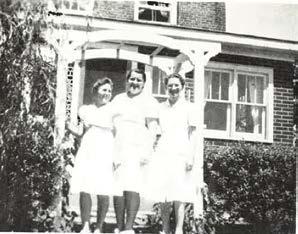
Agatha Klassen, Helen Derksen, Gertrude Wiebe
The number of patients increased from year to year. Until the year 1942 we had no help, either on the farm or in the care for the ill.
It’s important to note that the Ontario Mennonite Brethren Conference voted in 1937 and again in 1938 to have Bethesda remain private, at this stage they were not interested in official involvement. Despite this, Rev. Wiebe submitted Bethesda’s first annual report to the Conference in 1942, indicating that they were supporting seven patients. By 1944, the number had more than doubled to 15 patients, several of whom were from the western provinces.
Sister Agatha Klassen was the first one to come and help us. The second one was Helen Derksen. Then Brother Johann Wiebe and his sister Gertrude Wiebe, etc.
The farm dwelling was greatly improved in many respects, but far from suitable for the purpose intended. The cost for care and treatment was raised to $20 and $25 per month. The amount of donations improved, but were still insufficient for further development. We were seriously concerned in what way our people could be encouraged to support this work more intensively. Two specific experiences prompted us to pursue the thought more vigorously. First, during a dinner recess at one of our Mennonite Brethren Conferences, I walked over to a group of brethren who were involved in a lively discussion. When I approached the group, one brother who had his back turned to me, remarked quite emphatically, “I most certainly won’t help that Wiebe to develop his farm.” Second, a Christian couple from Kitchener came to visit us. The brother related the following incident; Last Saturday he travelled by train and he met another brother who related the following; “if I were certain that the Institute at Vineland would survive, even after the Wiebes were not there any more, I would contribute much more.” The logical understanding appeared to be that since this project was a private venture, many people held back with their support.
We had planned considerably how to create interest for the work among the church members, but did not arrive at a specific solution. At the conference of the Mennonite Brethren Church in 1943, after I had reported on the work of the Home, one brother raised the question
of what the Conference could do to improve the development of the Home. This question resulted in a discussion and it was agreed to ask the Conference Leadership to discuss the matter with me in detail, and find a way to develop this work more fully. During the dinner recess the Conference Leadership discussed the matter with me. After we had discussed various possibilities, it was decided to make a recommendation to the Conference to purchase the Home. The recommendation was accepted by the Conference and Leadership was instructed to make the necessary arrangements. In the year 1944 several business meetings were held.
The result of several business meetings in 1945 was that the Ontario Conference of Mennonite Brethren Churches acquired ownership of the Home, for the sum of $17,618.50. At the same time the Conference asked Reverend and Maria Wiebe to act as Houseparents. At the request of the Wiebes, the Conference officially named the Home “Bethesda!”
In 1946 Bethesda submitted its first annual budget of $8,865 to the Ontario Conference.
In response to need, in 1947 the Canadian Conference of Mennonite Brethren Churches purchased the Home.
Why was the care and treatment program so successful in spite of the lack of service supports? Reverend Wiebe relates the following in response:
“‘One day the (government) Inspector paid an unexpected visit to the Home. He entered through the sun-porch where a number of male patients were sitting around and chatting. As he entered the main building he met one of the nurses and asked, ‘What is it that you do with these Patients, they seem to be so happy, the door is not locked and they still do not run away? We have so much trouble with these people in government institutions.’ The nurse replied, ‘Oh, we love them!’”
On May 13, 1948 Bethesda received its first official license of approval from the Ontario government.
August 20, 1950 was an historic day for Bethesda. It was the day the main building on Fly Road in Vineland was dedicated. The building was projected to cost $65,000 and support up to 30 people. Along with the new building, 19 acres was purchased for $4,016.
Rev. J. Janzen from Grimsby greeted the crowd with these words from Psalm 118:24-25: “This is the day that the Lord has made, let us rejoice and be glad in it. Oh Lord save us, oh Lord give us success.”
Rev. H. Wiebe, Housefather of Bethesda presented the invocation using the words from 2 Corinthians 5:13-14, “For the love Christ compels us.” The dedicatory prayers were given by Rev. J. Penner from Virgil and Rev. J Harder form Yarrow, British Columbia.
Rev. Harder was the Canadian Conference Moderator and gave the keynote address. The choir from the Mennonite Brethren church in St. Catharines and the male choir from Kitchener provided special music. Dr. Russell from Beamsville expressed his respect for the services provided at Bethesda. Reeve Frank Laundry also spoke highly of Bethesda and quoted James 2:26, “Faith without deeds is dead.” Frank Peters gave a brief history of Bethesda and C.J. Rempel spoke on behalf of the Mennonite Central Committee.

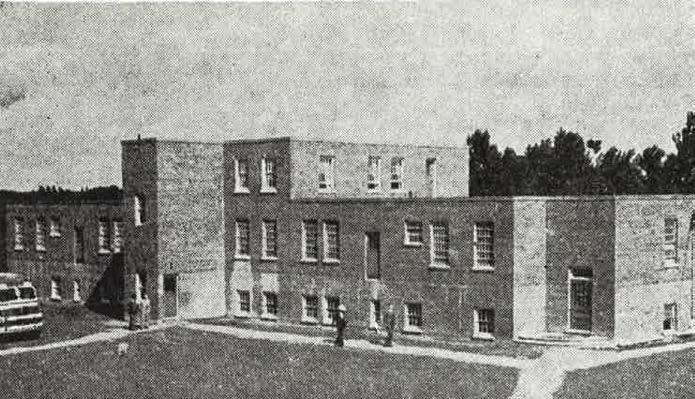


The main building on Fly Road continued to grow as more and more people were being admitted. In response, in August of 1954, 65 additional acres were purchased for $17,000. Expansion continued with an east wing being added in 1955 and a west wing in 1960, increasing the bed capacity to 110 people. Also in 1960, a staff residence was built. A further 24 acres was purchased in 1958.
In 1955 the Bartsch’s resigned and Houseparent responsibilities fell to Mr and Mrs. Gerhard Epp.
With the significant growth came involvement from the Ontario government. The first governmental financial support came in 1959 in the form of hospital insurance payments. At this time Ontario was the only province to recognize and provide funding to private institutions and Bethesda was the first institution to receive such funding, a unique experience. These payments allowed for better staff wages and improved care. Along with government operating dollars the Ontario government provided capital funds allowing Bethesda to retire building debts.
In 1964 Gerhard Epp resigned and Mr. and Mrs. D.A. Friesen were appointed. In 1965 Nick Braun was appointed as Bethesda’s Administrator.
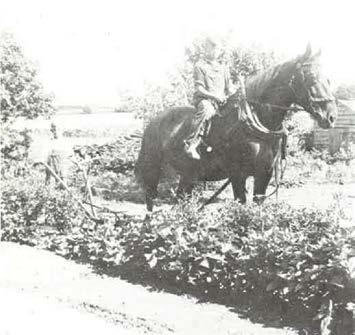
Martha Janzen, Nick Braun

changing rapidly. From the beginning, farming had been a major part of support to people. The original farmhouse was next to a large dairy barn and beyond that a hen house and pig barn. On the north side of the creek there was a large garden with raspberries, strawberries and other vegetables along with apricot and apple trees. There was no grocery store close by, so farming was the logical solution. Also, farming was a significant part of those receiving supports, providing meaningful work.
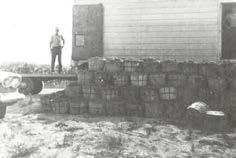
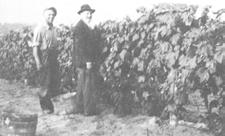
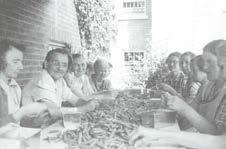
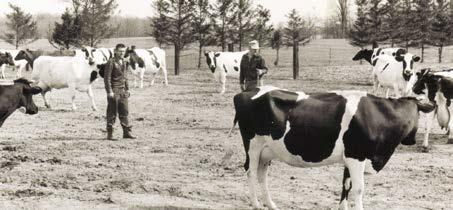
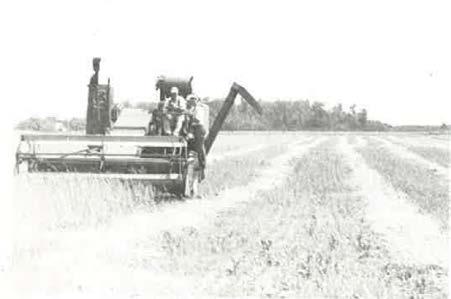
Once again significant change was on the horizon. In 1967, in a report to the Canadian Conference, it was reported that the Private Sanitaria Act, under which Bethesda was licensed, was soon to be repealed. Bethesda would need to make a decision as to which one of three Acts available Bethesda would now fall under. In 1968 at the meeting of the Canadian Council of Boards in Clearbrook, British Columbia, the following recommendation was presented and accepted:
“Whereas the Association of the Mentally Retarded and the Ontario government representatives of the Department of Health, Mental Retardation Branch have urged Bethesda to expand its facilities for Mentally Retarded and, whereas the Board of Management recognized the Bethesda project as a witness and service to humanity.”
In response, a Bethesda committee was formed and charged with the responsibility of preparing a feasibility study for an expansion project including possible self-liquidation financing, size and cost of building, staffing and other pertinent details as may be necessary. The feasibility study was completed and presented at a Board of Management meeting on January 17, 1969 in Calgary, Alberta. The tentative plan included the following:
• Phase 1: A residential unit of 48 beds in units of 12 single and double room occupancy, each unit to have its own living room, dining room and kitchen.
• Phase 2: Renovations to the main building to allow for change.
• Phase 3: An additional unit of 48 beds.
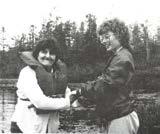
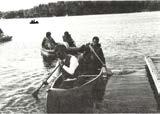
Discussions with the Ontario government continued and as a result a new proposal was presented to the government. It included the following:
1. Provide additional accommodation for 15 persons on the third floor of our old building.
2. Renovate the main floor of the old building and use it exclusively for workshop facilities.
3. The sewing services and grooming facilities to be moved to the small residence (now unoccupied).
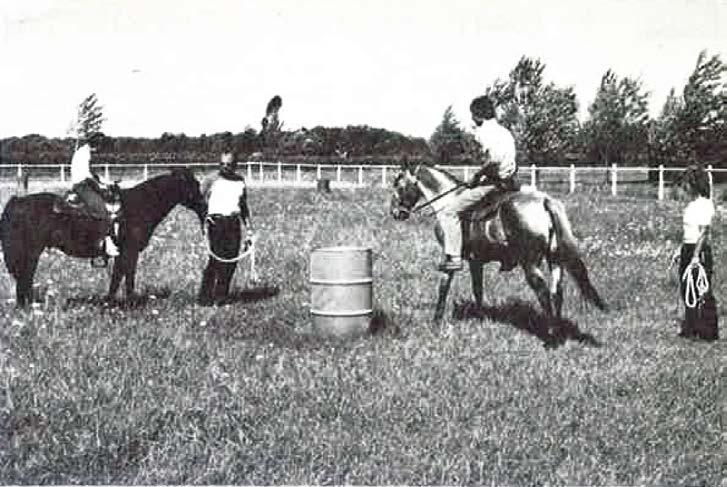

The above was approved by the government in a telephone conversation in July of 1970.
The historical importance of the above decision cannot be overstated. Bethesda was moving away from an institution supporting people with mental illness, to the support of people with developmental disabilities; from a medical model of service to a developmental model of service delivery. Rudy Siemens, long time staff and Home Director at the time, aptly refers to the “struggle and tenacity it took to meet the challenge of change from a hospital setting to a developmental centre.”
A 1976 report to the Board of Management of the Canadian Conference of Mennonite Brethren states it the following way:
“After a number of months of intensive planning, a shift to the new method of caring for [people] is being introduced, the “medical model” with a greater emphasis on providing a normal living environment, thus helping the [people] to develop to the best of his/her ability toward as normal a life as possible. Although this type of program has been demanded by the government department, we agree that it is a genuine improvement.”
Not only will the [people] benefit, but staff also will find work more interesting and challenging. Certain staff changes are necessary. In addition to changes relating to program, special efforts are being made to improve staff relations in other areas as well. Physical changes to the buildings during this time included the following:
• A gymnasium and chapel were added to the main building in 1970.
• The therapeutic swimming pool, which was donated to Bethesda by an interested and grateful family, was officially opened in July 1975.
• A Training Centre and kitchen was added in 1975.
• A maintenance building was added in 1982.
The horses enriched the lives of some of the people both by riding and looking after them

• In 1982 an addition was made to the Vocational Training building.
The pool has been a great asset to the recreation and rehabilitation program. A new workshop/maintenance shop is nearing completion. The much needed kitchen expansion will also soon be finished. All these improved facilities help make Bethesda a better place for people receiving supports and staff.
During the years from 1977 through 1978, Bethesda began the task of incorporating as a non-profit, Ontario based corporation and to transfer to the corporation such assets as it considered necessary. The incorporation was completed in 1979 for Bethesda Home for the Mentally Handicapped Inc. and in 1980 for Bethesda Home Foundation Inc. The directors at this time were: Walter Janzen, J.J. Riediger, Helmut Koop, Elmer Neufeld, Dr. Archie Heide, Leonard Martens and J. Burkholder. In 1983 the Board of Management for the Canadian Conference put forth the following recommendation:
“It is agreed to transfer control of the Bethesda Home for the Mentally Handicapped Inc., the Bethesda Home Foundation Inc. and the 55 acre parcel presently owned by the Canadian Conference of Mennonite Brethren Churches to the Ontario Conference of Mennonite Brethren Churches. The agreement to transfer was [signed] in February of 1983 by John Eckert.”
In 1969 with a population of 96 people, 32 had a psychiatric illness, 32 had a psychosis in elderly people and 32 people had a developmental disability.
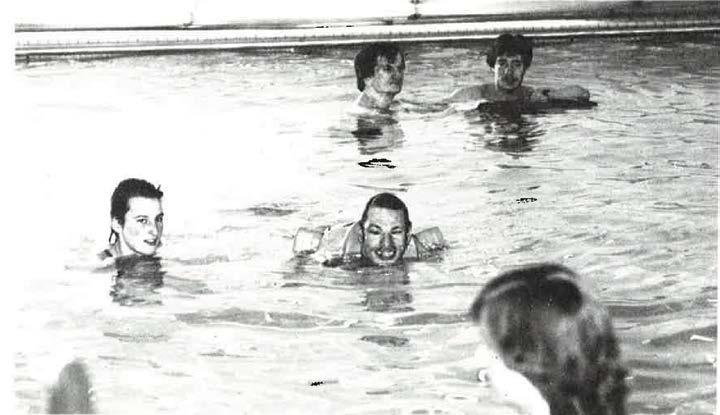

built and donated by Demik Construction
By 1971, just two short years later, 24 had a psychiatric illness, 14 had a psychosis in elderly people, and 72 people had a developmental disability. In 1976, 100 of the 118 beds went to supporting people with a developmental disability; Bethesda’s mandate was changing.
While there were plans to cap Bethesda’s population at 150 people, the facility on Fly Road reached a peak residency of 122 people at various times throughout the 1970s and early 1980s.
During these formative years Bethesda was blessed with dedicated, hard working staff that went above and beyond, in their love for the people. Special recognition must be given to the late Dr. Harold Latham (1913 – 2008) for his 40 years of service to Bethesda from 1940 to 1942 and then from 1945 to 1983. In addition, the late Neil Pauls (1937 – 2008), who, during his 26 years at Bethesda, guided the organization through the transition from Mental Health facility to a Developmental Home as the first Senior Programmer.
And finally, Dr. Tom Zeyl, who provided health care support to the residents of Bethesda from 1982 – 2019.
Our co-founder, Reverend Henry Wiebe, passed away June 18, 1980.
The eighties ushered in an era of community services at Bethesda. The focus in Canada, and indeed throughout the world, was on deinstitutionalization of services and supports to people with mental illness and developmental disabilities. Supporting people within the community in their family homes or smaller home like settings run by community based organizations was identified as the preferred support modality. With this in mind, Bethesda began to depopulate the Fly Road facility and reach out and support people in their communities.
The first major step in providing supports to the community came in 1982. Bethesda incorporated a third organization called Bethesda Community Services of Niagara Inc. The first program to be offered was Niagara Assessment and Programming Services (NAAPS). Initially this team of clinicians received referrals for people over the age of 18 who had or who were suspected of having a developmental disability, and provided psychological services, speech and language therapy, physiotherapy and occupational therapy. The following year, 1983, Bethesda was asked by the Ministry of Community and Social Services to add a Familyhome Program.
This program was designed to admit people from government institutions into Associate Family homes. Associate families are a foster home living arrangement where people integrate into family life. The program was originally started by Dr. Laura Warkentin, eventually growing to approximately 60 people in various homes throughout the Niagara Peninsula. Finally, in 1983, Bethesda Community Services of Niagara Inc. opened two community living homes in St. Catharines. The first being on Scott Street and the second on Ontario Street. Both homes continue to support people.
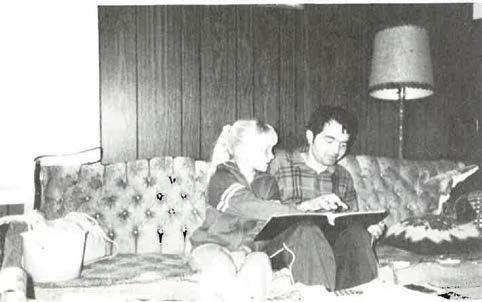
Christie encouraging Bob to talk with his picture book
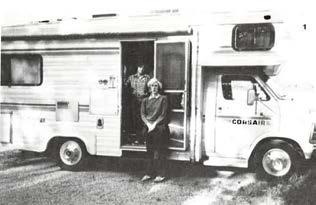

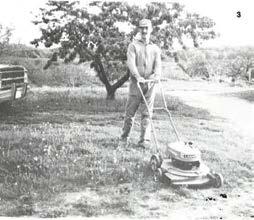
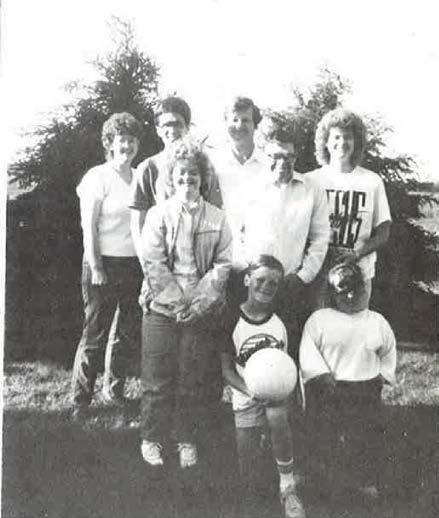
(Bottom right) Martin helping with the chores at the Wiens home
Also for the first time in our history, Bethesda’s head office was moved off of the grounds on Fly Road in the late 1980’s. An office was leased along the QEW highway at Jordan Station.
In 1985 Bethesda undertook an independent comprehensive operational review. This review provided the context and road map for further community involvement.
In 1987 Bethesda paused to celebrate 50 years of supporting people with special needs. Festivities began on Friday, October 16, with open houses at all facilities. In the gymnasium there were exhibits
of work done by those receiving supports and a photo gallery where past and present staff could view familiar scenes. On the Saturday evening a banquet was held at the Scott Street Mennonite Brethren Church gymnasium.
Mrs. Maria Wiebe was presented with a plaque in recognition of her pioneer work at Bethesda. Isaac Block, college professor at Mennonite Brethren Bible College spoke. Weekend celebrations concluded with a Thanksgiving service on Sunday afternoon at the Vineland Mennonite Brethren Church.
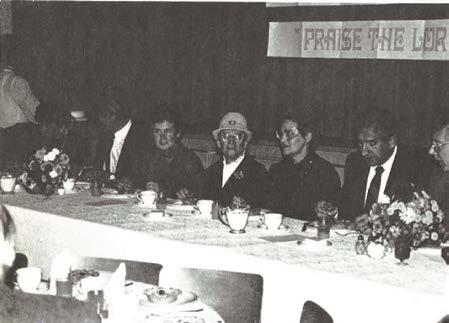
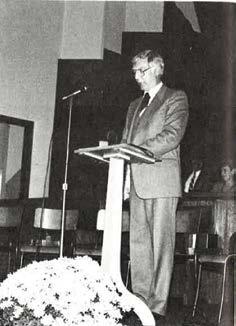
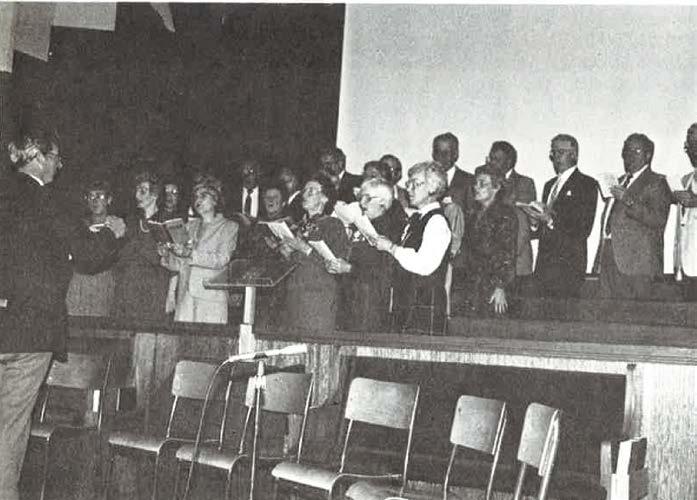
the goal of community living.” Within this policy framework the Ontario government would close all government run institutions between 1987 and 2009.
In 1992 Bethesda was awarded the region’s first Dually Diagnosed program. This program was specifically established to clinically support individuals with a developmental disability and a mental
Bethesda was ahead of the curve and well on its way to providing services and supports within a person’s community. The days of
Within the life cycle of any organization there are challenging times. Bethesda went through an extremely challenging time in the early to mid 1990’s. During this time, the Ontario Ministry of the Attorney General conducted an investigation with some critical findings. The findings and subsequent report resulted in a number of operational and governance changes that corrected the identified concerns, culminating with several new board members and a new Executive Director in 1995. Since this time, the organization has flourished and continues to operate and be governed in an appropriate manner.
In the summer of 1995 the Ontario government “delisted” Schedule 2 facilities in Ontario. A schedule 2 facility, like Bethesda, was defined as a “privately run, government funded institution, that supported people with developmental disabilities.” This was the official end to large congregate facilities in Ontario, private as well as government run.
A new policy framework was published by the government of the day. Making Services Work for People was distributed in April 1997. This policy framework promoted four shifts in direction. They were:
• From government responsibility to shared responsibility.
• From services that respond only to entrenched problems, to services that anticipate, respond earlier and reduce the need for future services.
• From services organized by agency to services that respond to people and their families.
• From addressing needs through growth to doing better with existing resources.
In 1997 Bethesda formally published a new organizational mission statement. It stated the following:
“To provide in the Spirit of Christ a continuum of holistic services which will enhance the quality of life for people who have a developmental disability.”
Our mission was set for many years to come. In addition, Bethesda’s new strategic plan stated the following five goals:
1. To provide meaningful person-centred plans of support that recognize and develop the unique gifts of each person by listening to the people we serve and their families.
2. To encourage staff to be caregivers, friends and advocates, and maintain a high level of competency and expertise.
3. To provide quality educational opportunities for people receiving supports, families, staff and volunteers.
4. To have a continuous quality improvement process in place.
5. To support strong healthy relationships within the community and the Mennonite Brethren Conference.
In keeping with Bethesda’s new community focused direction, Bethesda donated the use of 30 acres of land to a group of local farmers for international aid in 1996. Under the leadership of Tom Neufeld, Grow Hope Niagara has been donating corn to countries in need around the world. This international partnership has been ongoing from 1996 to 2023. Since 2016, Grow Hope Niagara has contributed over $173,000 to the Canadian Foodgrains Bank.
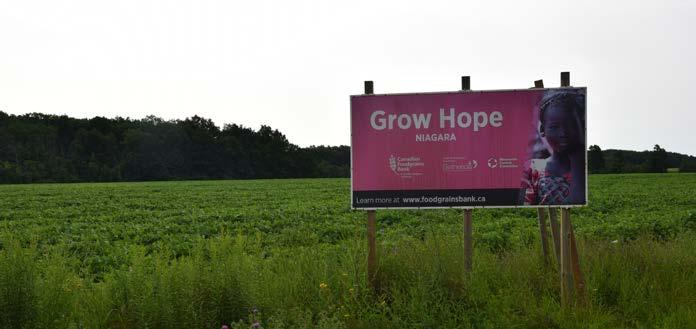
On May 26, 2000, Bethesda officially incorporated their third corporation, Bethesda Residential Holdings Inc. The responsibility of this corporation was, and is, to manage all of Bethesda’s tangible assets. This move allowed for an arm’s length relationship with the government funded Bethesda Community Services of Niagara Inc. and the Bethesda Home Foundation Inc., the fundraising arm of Bethesda. Mrs. Wiebe, co-founder of Bethesda, passed away on February 14, 2002.
Bethesda’s history was significantly changed on October 1, 2001, when we were asked by the Niagara community and the Ontario government, to support children and youth in a new program called Children’s Behaviour Service. Linda Moroz was hired as Bethesda’s first dedicated Children and Youth Services staff as a Behaviour Therapist.
Twenty-two years later, Linda continues to provide expert behavioural service for families across the region. In addition to individual and group services, Bethesda’s Children’s Behavioural Services through Linda offer a comprehensive calendar of workshops and learning series for caregivers and community partners.
While the program was small, it was a first for Bethesda, and set the stage for what was to come. Since the implementation of Children’s Behaviour Service in 2001, the following programs have been added:
• 2005
Children’s Developmental Assessment Services provides family-centred, comprehensive developmental assessments for children/youth when a diagnosis of a developmental disability or Autism Spectrum Disorder is suspected.
Autism Consultation Services offers a range of individual and group services and supports for children, youth and their families.
• 2006
Hamilton Niagara Regional Autism Intervention Program - Under the leadership of McMaster Children’s Hospital in Hamilton, Bethesda joined a regional partnership with Lansdowne Children’s Centre in Brantford and REACH in Haldimand-Norfolk to offer intensive behaviour intervention services to children in the Niagara region.
• 2007
Autism Spectrum Disorder (ASD) Respite Services offers a variety of recreational activities for children and youth, including: After School Social Skill Programs, Saturday Recreational Programs, Summer and March Break Camps, Pre-School Respite Programs and two specialized services for child/youth who have individualized needs: Flex Funds and In-Home Respite. Autism Consultation Services -Bethesda received additional funding to enhance transition support services for children, youth and their families.
• 2011
The regional partnership under leadership from McMaster Children’s Hospital expanded to include a new Ministry funded program called Applied Behaviour Analysis Services and Supports. The expansion in services created new opportunities for the team to provide individualized behavioural services, brief consultations, group services and workshop learning series for caregivers and youth.
• 2016
The Ministry of Children, Community and Social Services announced a change to Autism Service across the province. The new Ontario Autism Program (OAP) was introduced to provide all children, regardless of age with more flexible services based on each child’s needs. As part of the change, the Ministry shifted the eligibility age for early intervention services and provided funding to families who were no longer eligible for the program.
• 2019
The Ministry of Children, Community and Social Services restructured the way Autism Services were funded across the province of Ontario. The funding model shifted from providing money to organizations to deliver service, to a system where they provided money directly to families so they could purchase service from a provider of their choice.
The Ministry announced the funding model change on February 6, 2019 and notified organizations the change would come into effect on April 1, 2019. Bethesda had a small window of time to make a decision to either close Children and Youth Autism Services or invest in the development of a new Fee for Service Department.
The Board of Directors strongly supported the plan to build on the team’s strong foundation of providing family centred service and develop a new model of service delivery. Members of the Board of Directors and Senior Leadership met with families to hear their feedback and provide reassurance that Bethesda remains committed to providing quality services and supports to people in our community.
Fee for Service Applied Behaviour Analysis and Early Intensive Behaviour Intervention services were introduced for the first time in Children and Youth Services in the spring of 2019.
• 2020
The regional partnership with McMaster Children’s Hospital, Lansdowne Children’s Centre and REACH expanded again to include the Ontario Autism Program Foundational Family Services. The new Ministry funded program offers free and immediately available services and supports to families registered with Bethesda. Children, youth and families have access to brief consultations, recreational and group services, workshops and learning series, family support groups and activities, sibling support groups and peer mentorship services.
• 2021
The regional partnership with McMaster Children’s Hospital, Lansdowne Children’s Centre and REACH expanded again to include two new partners, Six Nations Health services and the Niagara Children’s Centre to offer a new program called the Ontario Autism Program Caregiver Mediated Early Years Service. Bethesda works closely with the Niagara Children’s Centre to coordinate local intakes and service delivery for families with children under the age of 4.Services focus on building caregiver capacity to support their child’s skill development in one or more of the following areas: social interaction, play, communication, emotional development, adaptive development and self-help skills.
The Ministry announced additions to eligible services families could purchase with their funding from the Ontario Autism Program. The expansion of eligible options included: Applied Behaviour Analysis Services, Speech and Language Services, Occupational Therapist Services and Mental Health Services. Bethesda responded to the changes by expanding the Fee for Service department and hiring the first Speech and Language Pathologist and Occupational Therapist.
• 2022
The regional partnership with McMaster Children’s Hospital, Lansdowne Children’s Centre, REACH, Six Nations Health Services and the Niagara Children’s Centre expanded again to include the new Ontario Autism Program, Entry to School Program. Together with the Niagara Children’s Centre, Bethesda cofacilitates this interdisciplinary group service to help children get ready to start school for the first time. The program is available up to 15 hours a week for six months and is offered at different sites across the region.
The Ministry announced a new funded program under the Ontario Autism Program called Urgent Response Services. Contact Brant was selected as the lead organization for the new program. Under a purchase of service agreement with Contact Brant, Bethesda is
the lead provider of clinical services for families across the Niagara region, providing interdisciplinary support to children and youth who are experiencing high risk behaviours.
In response to an identified need in the community for trained respite workers, Bethesda developed a new position called Therapeutic Respite Worker (TRW). The TRW team works closely across different programs in Children and Youth Services to offer therapeutic respite services integrated into clinical treatment plans.
The Fee for Service department expanded to include a Social Worker for the first time in the history of Children and Youth Services. The Social Worker helped lead the development and implementation of new mental health services for children, youth and their families.
• 2023
The Fee for Service department expanded to include three new disciplines that were integrated into existing programs to enhance service options for families:
A new Psychotherapist worked closely with the Social Worker, to further develop the Mental Health and Wellness department in Children and Youth Services.
A Communicative Disorders Assistant position was added to the Speech and Language Fee for Service program. The new team member works in collaboration with the Speech and Language Therapist to offer both individual and group services.
An Occupational Therapist Assistant position was added to the Occupational Therapy Fee for Service program. The new team member works in collaboration with the Occupational Therapist to offer both individual and group services.
In response to the significant growth in services to children and youth, the Bethesda Board made the decision to commit approximately $6.5 million towards building the Niagara Family Centre. Built by Brouwer Construction, the Centre was to be 27,000 square feet of space specifically designed to support children with special needs. Approximately $1.1 million of the total cost was donated by families, friends and community partners. The official dedication of the Centre took place on October 14, 2016, with deep appreciation to staff member Candace Walker, for going above and beyond in coordinating this project. Generations in the future should be aware that a time capsule has been placed behind the corner stone at the front of the building, contents are… well, we will just have to wait and see! In six short years the Centre was completely paid for, without the use of government funding.
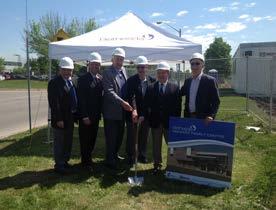
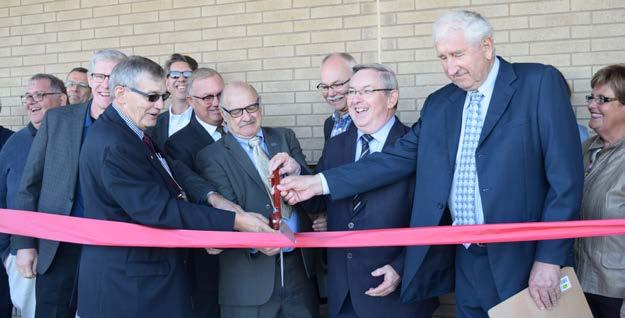
On October 23, 2008, Bethesda chose to honour John Sweeney, the late Minister of Children, Community and Social Services (1985 – 1989), when a new home was built on the grounds of Fly Road. Minister Sweeney was instrumental in influencing the direction of developmental services in Ontario with his policy document Challenges and Opportunities.
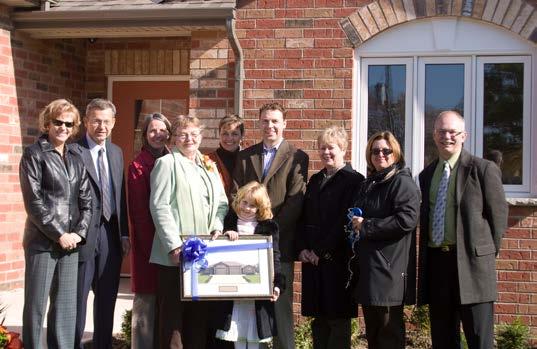

Minister Sweeney - Image taken from the Legislative Assembly of Ontario
On September 4, 2009, Bethesda paid tribute to Neil Pauls (1937 – 2008), a staff member who was instrumental in transitioning the organization from a medical model to a developmental model of service and supports.
A park located at Bethesda’s head office on Schmon Parkway was dedicated in his honour.


It was again time for Bethesda to celebrate; 2012 marked the 75th year providing supports to people in the Spirit of Christ.
Throughout the year, several special events marked this milestone and an anniversary book was published.
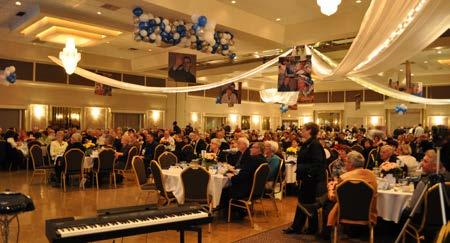
Bethesda’s 75th celebrations
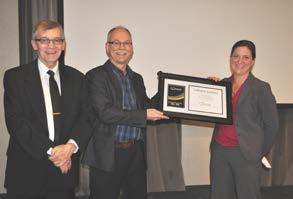
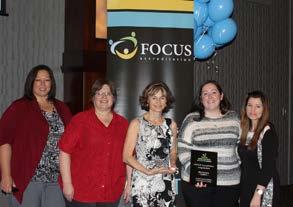
On February 17, 2012, Bethesda amalgamated Bethesda Home for the Mentally Handicapped Inc. with Bethesda Community Services of Niagara Inc. creating Bethesda Community Services Inc.
In 2011, with a deep commitment to excellence, Bethesda pursued accreditation with Focus Accreditation. This third party accreditation company, applying national standards of service, rigorously evaluated all of Bethesda’s programs. As a result of hard work and dedicated staff, Bethesda achieved a four-year (2012-2016) accreditation, confirming with stakeholders the quality of our programs.
At the February 2018 Ontario Conference of Mennonite Brethren Churches, it was decided to relinquish ownership of Bethesda. Two issues factored into the decision. First, the Conference was focusing its energy on church expansion, and second, with over 500 staff and 2,700 individuals receiving supports, Bethesda had become a large, sophisticated organization making it difficult for the Conference to oversee.
In October of 2022 the Bethesda Board, spearheaded by its President, Bill Jackson, decided to give back to the country that our founders emigrated from, Ukraine. In partnership with the local Ukrainian Canadian Council, Bethesda donated $15,760 towards the support of people with special needs in that war torn country.
From March 2020 to May 2023 the world struggled with the COVID-19 pandemic. The implications to Bethesda were profound. Restrictions on the people we support and the staff of Bethesda can not be overstated. It took a combined effort to keep one another safe. Fortunately, none of the staff or people Bethesda supports succumbed to the virus; for that we are thankful.
In 2022, Bethesda incorporated its forth company, Bethesda Direct Services Inc.
This new company was established in response to the government’s fee for service initiative. Within the childrens and adult systems the government has been moving in the direction of individualized funding and providing support funds directly to families. The new company allows Bethesda to keep direct and indirect funds separate.
Responding to a request from the Provincial government, Bethesda opened its first Niagara Falls group home in the fall of 2022.
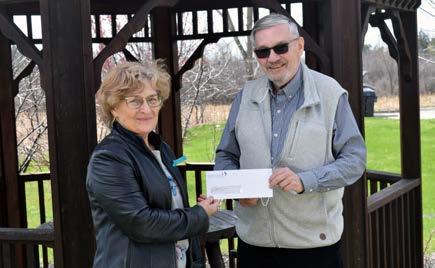
On January 27, 2023, long time Chief Executive Officer, Brian Davies retired from Bethesda. Brian came to Bethesda in July of 1985 as Accounting Manager; after ten years he took on the main leadership role as CEO, a role he held for 28 years. The Bethesda Board, in partnership with Brock University, honoured Brian’s tenure with a bursary in his name. Annually a deserving Brock University student in the Applied Disability Studies program will receive $5,000 from the Bethesda – Brian H. Davies’ Bursary.

While it is impossible to recognize all of the staff that worked at Bethesda, we hope you enjoy the following photos:
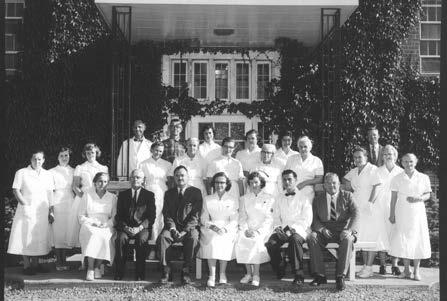
1957
ROW 1: Mrs. Epp, Rev. Epp, Dr. H.D. Latham, Gertrude Harder, Marie Penner, Jake Penner, Mr. George Friesen
ROW 2: Unknown, Betty Schellenberg, Helen Giesbrecht, Mary Durksen, Mrs. Dueck, Mrs. Teske, Katie Isaak, Helen Dyck, Hildegard Bielan, Annie Regier, Suzanna Janzen
ROW 3: Herb Thiessen, Mr. Frank Dueck, Erna Wall, Margaret Durksen, Unknown, Unknown, Howard Klassen
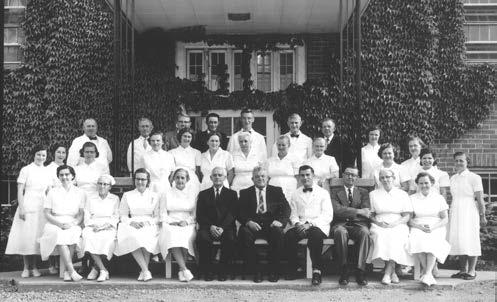
1958
ROW 1: Tina Doerksen, Kathie Isaak, Gertrude Harder, Mrs. Epp, Mr. Gerhard Epp, Rev. Gerhard Friesen, Jake Penner, Frank Dueck, Mrs. Dueck, Mary Durksen.
ROW 2: Helen Isaak, Mary Isaak, Justina Isaak, Anna Toews, Annie Unruh, Hildegard Bielan, Helen Dyck, Mrs. Janzen, Mrs. B. Jansen, Irene Pauls, Katie Lidtke, Agathe Pauls
ROW 3: Abram Isaak, Jacob Enns, Jake Pauls, John Toews, Isaac Block, Heinrich Jansen, John Boschman, Monika Jansen, Mary Boldt.
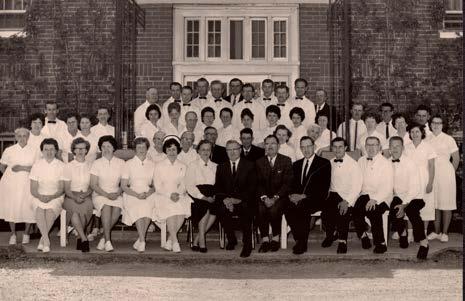
ROW 1: Mrs. Froese, Kaye Dyck, Martha Janzen, Tina (Doerksen) Nickel, Louise Koop, Elizabeth Petkau, Mrs. Friesen, Rev. Friesen, Dr. H.D. Latham, Nick Braun, Jake Penner, Willi Toews, Isaac Block, Katie Lidtke
ROW 2: Unknown, Unknown, Unknown, Kaethi Klippenstein, Unknown, Katie Isaak, Mrs. Dueck, Mr. Frank Dyck, John Toews, Annie Toews, Helen Dyck, Katie (Voth) Froese, Selma (Rogalsky) Reimer, Carol Kroeker
ROW 3: Rudy Siemens, Mary Boldt, Unknown, Miss Penner, Helen Giesbrecht, Lena Enns, Unknown, Carol (Enns) Rogalsky, Diana (Dyck) Andres, Mrs. Enns, Ed Koop, Pete Derksen, Jake Neufeld
ROW 4: Mr. Isaak, Bernie Jansen, Waldemar Enns, John Unruh, Corny Funk, Corney DeJong, Herman Duerrsteln, Unknown, George Willms, John Klippenstein, John Boschman
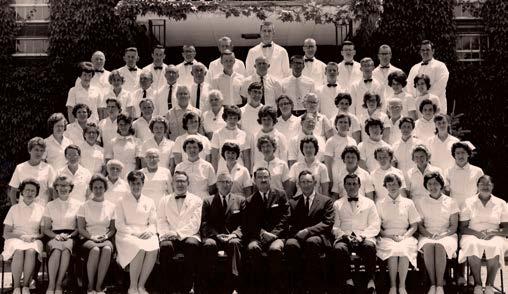
ROW 1: Helen Giesbrecht, Martha Janzen, Anne (Haarsema) Himes, Margaret Loeppky, Willi Toews, Rev. David Friesen, Dr. H.D. Latham, Nick Braun, Jake Penner, Louise Koop, Katharine (Doerksen) Nickel, Mrs. Goertzen.
ROW 2: Dorothy Andres Unruh, Lena Enns, Mrs. Froese, Katie Isaak, Kay Dyck, Carol (Enns) Rogalsky, Mary Boldt, Anne Loewen, Dora Gamble, Tina Goertzen, Eva Olenick, Gertrude Esau.
ROW 3: Hilda (Baerg) Boldt, Doreen Dyck, Emmy (Reimer) Martens, Giezela Hildebrandt, Mrs. Robertson, Ina Otten, Anita (Lodde) Nicol, Judy Willems, Mary Balzer, Linda Willms, Kaethi Klippenstein, Elfrieda (Baerg) Bushman.
ROW 4: Katie Lidtke, Erna Wiens, Mrs. Unrau, Mrs. Bulton, Miss Dyck, Margaret Hildebrandt, Mrs. Mech, Mrs. Wall, Kathy Wiens, Edith Block (Friesen), Miss Penner, Mrs. Turner.
ROW 5: Darlene Friesen, Laura Konrad, John Boschman, Mr. Mech, Mr. Willems, Rudy Friesen, Ed Koop, Pete Derksen, Rueben Block, Don Nesbitt, Diana (Dyck) Andres, Eleanor (Andres) Klassen.
ROW 6: Mr.Isaak, Jake Neufeld, Bernie Janzen, Herman Duerstein, John Unruh, Walter Balzer, John Matthews, Ken Dyck, Bert Epp, Richard Rosa.
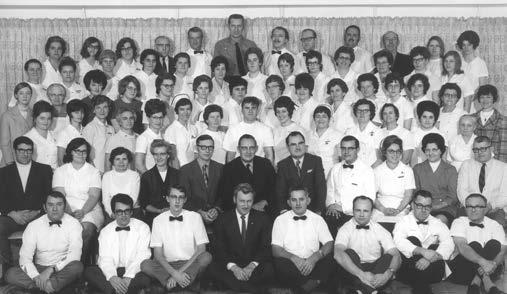
ROW 1: Al Mills, Bob Loewen, Richard Braun, John Klassen, Jake Neufeld, Wally Mandau, Albert Epp, Wm. Wittekoek.
ROW 2: Pete Derksen, Mrs. Donna Vanderveen, Katie Lidtke, Martha Janzen, Isaac Block, Mr. N. Braun, Dr. H.D. Latham, Jake Penner, Mrs. L. Skitch, Tina Doerksen, John Thiessen.
ROW 3: Mrs. L. Nelles, Rita Epp, Mary Boldt, Mrs. Erna Friesen, Mrs. Mary Dickau, Mrs. J. Boyd, Mrs. Marie Penner, Peter Robinson, Mrs. F. Good, Mrs. Jan Mills, Kathryn Dyck, Mrs. L. Climo, Emilia Malerba, Mrs. Helen Froese.
ROW 4: Lynn Albright, Mrs. Maria Wall, Mrs. Margaret Pritula, Mrs. Ann Thiessen, Mrs. Nora Lloyd, Annie Janzen, Mrs. Joan Altoft, Mrs. Mary Marratt, Eleanor Goertzen, Mrs. Donna Derksen, Mrs. A. Meyer, Mrs. Barb Robinson, Agnes Unrau, Mrs. Alida Wittekoek, Mrs. Anne Hamm.
ROW 5: Lena Enns, Mrs. Gisela Hildebrandt, Elly Droppert, Mrs. J. Droppert, Mrs. Helga Wiens, Mrs. Marilyn Klassen, Darlene Znak, Helen McCormick, Jeannie McPherson, Mrs. MIidred Copeland, Mrs. Justina Willms, Linda Willms, Usrula Janzen.
ROW 6: Mrs. Helen Epp, Kathy Martens, Elfrieda Weier, Mr. W. Mech, John Unruh, Walter Balzer, Hans Sawatsky, John Matthews, Richard Rosa, Mr. A. Willms, Carol McPherson, Mary Hiebert.
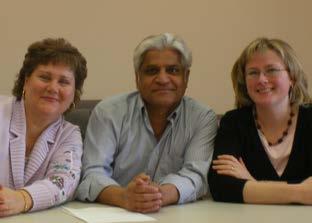
(Top left)
Cecilia Shepherd, Therrian Ooman, Alyson Wilson
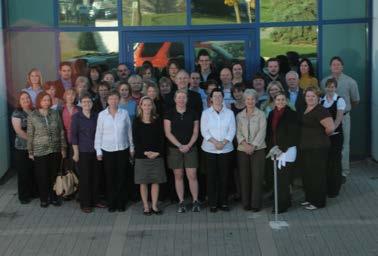
(Bottom right)
ROW 1: Erin Judd, Mary Draper, Sharon Forgeron, Ruby Ford, Diane Campbell, Jen Butera, Jessie El-Farram, Margaret Lockhart, Mary Tennant, Unknown, Melissa Gibson
ROW 2: Elisabeth Thompson, Linda Carriere, Bev Janzen, Unknown, Tracey Foisey, Brian Davies, Unknown, Kerry Boyd, Tiffany Danieluk
ROW 3: Rose Brenneman, Irma Ruiter, Nancy Gale, Paul McGowan, Jason Young, Unknown, Gary Laws, Shawna Gain
ROW 4: Karen Hodgson, Dan Zadarosny, Sherry Leslie, Doug Walton, Yvonne Glowacki, Sandie Narsansky, Mike Gall, Marcie Scott, Ian Lockett, Gail Marr, Tim Robson
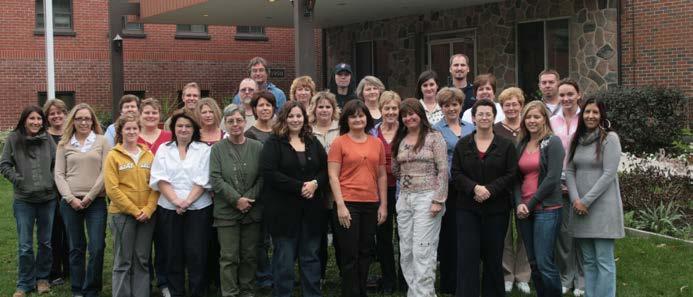
(Top center)
APPROXIMATELY OCTOBER 2007
ROW 1: Unknown, Danielle Gdanski, Wilma Miller, Christina Cramp, Michele Mitchell, Diane Smith-Coomber, Margaret Lockhart, Unknown, Denise Ziegler
ROW 2: Louise Peel, Denise Comfort, Tracy Foisey, Trinda Rensen, Christine Kaine, Unknown, Kelly McMillan, Hilda Boldt, Unknown
ROW 3: Unknown, Leona Thrasher, Miriam Bauer, Joel Unruh, Paul Kort, Lynnette Haining, Rhoda Penner, Ginnie Aube, Marg Dearing, Troy Huisman
ROW 4: Chris Lepp, Kevin Sloggett, Dennis Van Heusden
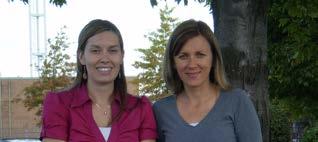
(Bottom right) OCTOBER 2008
Liz Graham, Bev Boden
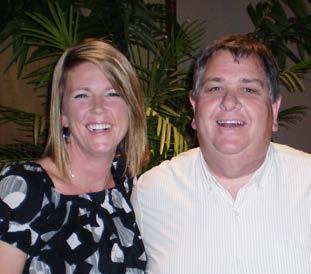
OCTOBER 2008

OCTOBER 2008
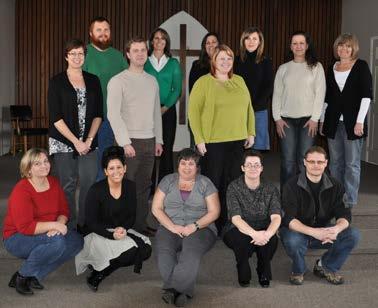
ROW 1: Kelly Vaillancourt, Denise Ziegler, Lani Harris, Margaret Lockhart, Rob LaRue
ROW 2: Andrea Friesen, Chris Saylor, Carrie Adewumi
ROW 3: Brad Warner, Karen Hodgson, Roxanne Gigante, Bev Boden, Phyllis Davidson, Donna Hines
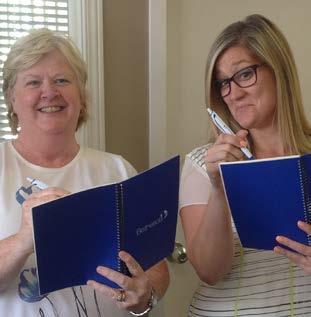
(Bottom right)
SEPTEMBER 2015
Maryanne Fast, Meaghan Erb

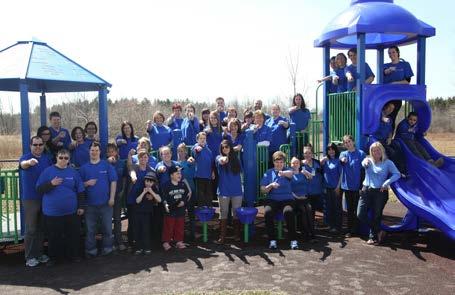
ROW 1: Katie Daistra, Corrin Oosterhoff, Kim McAlpine, Dorothy Swift, Amanda Duncan, Rebecca Allen, Vicki Vettraino-Pisano, Tamara Moes, Sharon Bright
ROW 2: Mike Gilmore, Janine Cicci, Helen Athanasiou
ROW 3: Unknown, Jennifer Jeffrey, Jennifer Marinelli, Kerry Boyd, Linda Moroz
ROW 4: Perry VanVeen, Unknown, Unknown, Bev Janzen, Lori Hough, Elisabeth Thompson, Amanda Hendry, Tara Burke
ROW 5: Annemarie Coles, Shelby Diemert, Mendelt Hoekstra, MaryAnne Fast, Unknown
SLIDE: Unknown, Alyson Wilson, Yvonne Glowacki, Amber Boshart, Brianne Cavanagh, Unknown
(Bottom right)
MAY 25, 2016
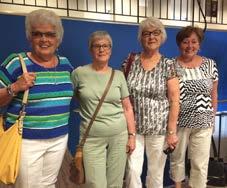
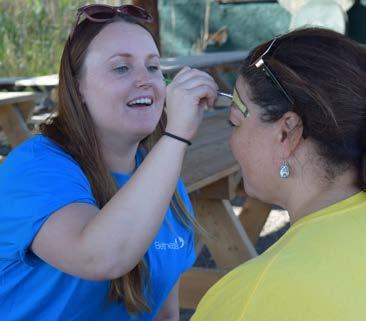
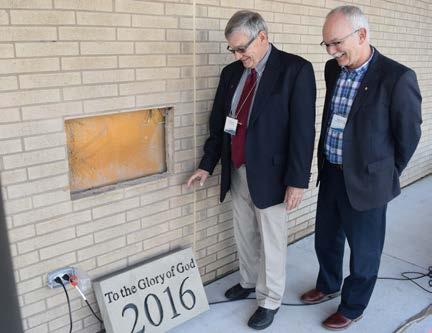
OCTOBER 14, 2016
SEPTEMBER 19, 2018

(Top left)
OCTOBER 29, 2018
ROW 1: Jenn Marinelli, Kaitlin Johnstone, Unknown
ROW 2: Corrin Oosterhoff, Brianne Freiwat, Katherine Sanderson
ROW 3: Kiera Del Duca, Tonya White, Tarin Marsili
ROW 4: Autism Ontario Staff, Alyson Wilson, Unknown, Sandie Narsansky

(Bottom right) NOVEMBER 2018
Shelley Mercer, Karen Hodgson
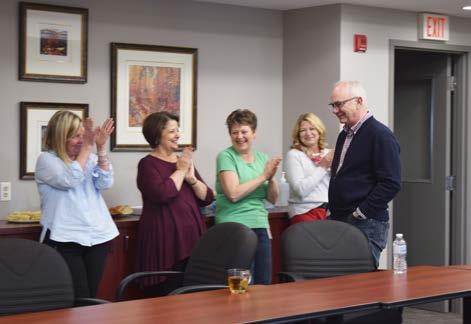
APRIL 16, 2019

OCTOBER 31, 2019
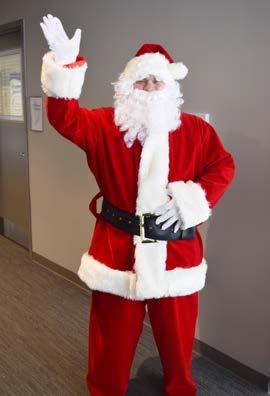
2019
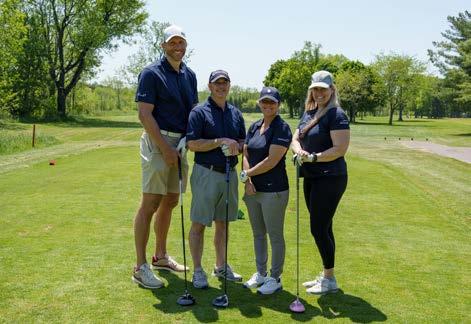
JUNE 2023
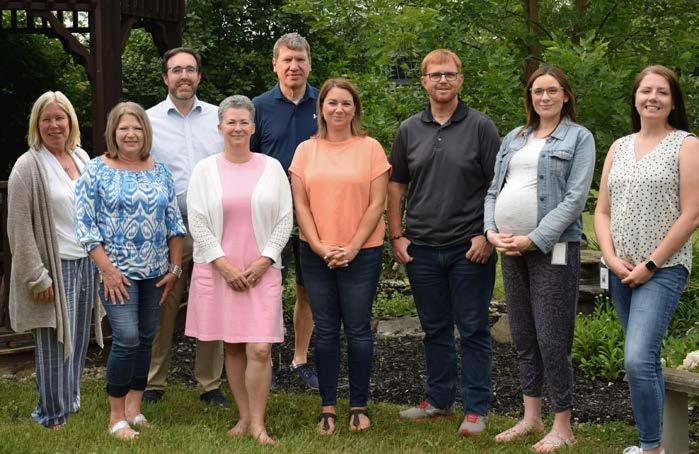
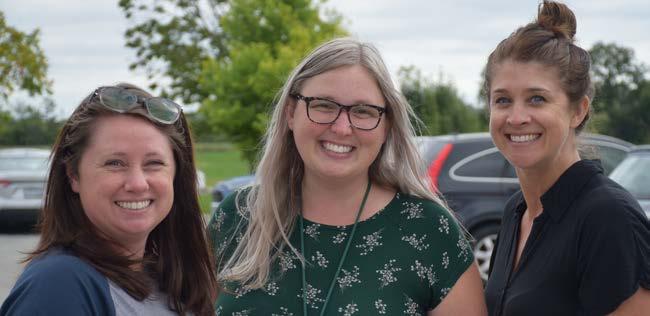
AUGUST 2023
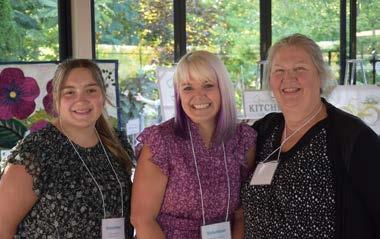
September 2023
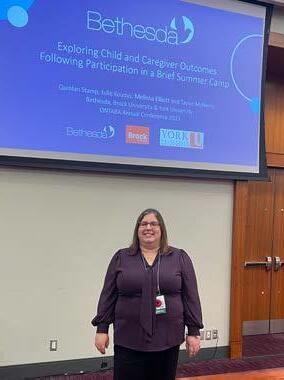
NOVEMBER 2023
Melissa Elliott
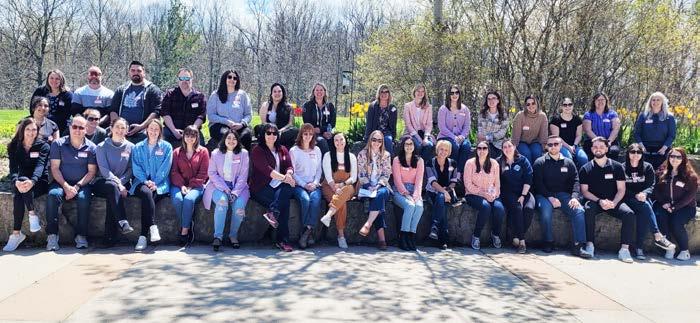
ROW 1: Tara Baatnes, Amanda Assi, Mike Gilmore, Shawna Gain, Carol Hicks, Christine Nelson, Jacqueline Colosimo, Disha Mehta, Sarah Philbrick-Djerfi, Hannah Brunet, Katie Falco, Maggie Lewis, Kailey Cheropita, Danielle Hamilton, Katrina Frausel, Katherine Sanderson, Ryan Rivers, Matthew Covington, Christina Arnoczki, Paula Taylor
ROW 2: Angela Johnson, Devon Koekoek, Dale Littlewood, Ian Lockett, Katryna McKenna, Melody Dempsey, Leah Jeffery, Mandy Lutczyn, Allison Hibbett, Shannon Duke, Kristin Gregory, Janine Costello, Larissa Hamilton, Alison Hodgkins, Karen Hodgson
The importance of Bethesda’s chaplaincy can not be overstated. It is a fundamental part of the supports provided to people. The unique nature of this ministry, points to God’s unwavering love for those with special needs. Our deep appreciation to the following Bethesda Chaplains.
Rev. J. Janzen
Rev. H. Bartch
Rev. G. Epp
Rev. D. Friesen
Rev. Isaac Block
Mr. Neil Pauls
Rev. W. Janzen
Mr. Martin Durksen
Mr. Ron Mullin
Mr. Jim Sommerville
Mr. Mike Gilmore

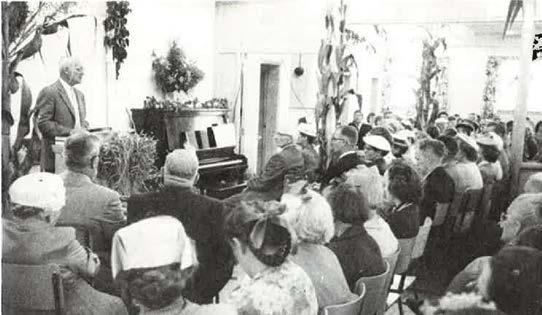


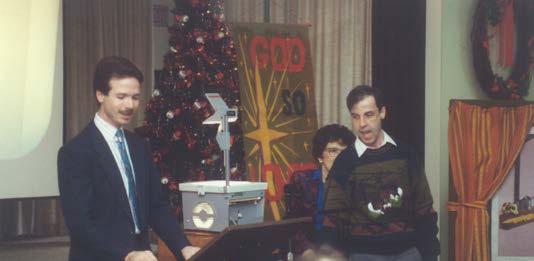
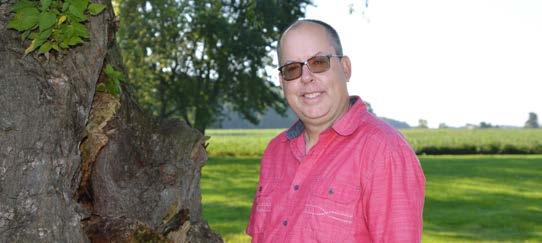
Rev Henry P. and Maria Wiebe Houseparents 1937 to 1951
Heinrich and Anna Bartsch Houseparents 1951 to 1955
Mr. and Mrs. Gerhard Epp Houseparents 1955 to 1962
Mr. and Mrs. D.A Friesen Houseparents 1962 to 1964
Nick Braun Director 1965 to 1977
Don Boese Executive Director 1977 to 1995
Brian Davies Chief Executive Officer 1995 to 2023
Paul McGowan Chief Executive Officer 2023 to present
Incorporated January 31, 1980, Bethesda Home Foundation Inc. exists to express the ‘heartbeat’ of the Bethesda Board, as it seeks to support people over and above government funding. While Bethesda, like so many other service based organizations, receives significant funding from the Ontario government, urgent needs exist over and above funding received. For these needs we raise funds from individuals and through corporate donations. In our founding year of 1937, donations totalled $176. In 2022 donations totalled $2,252,635. These funds were used to provide additional respite and clinical services to children and their families.
Bethesda gratefully accepts all donations with deep appreciation, regardless of the amount, recognizing how donations help to create community, by making a difference!
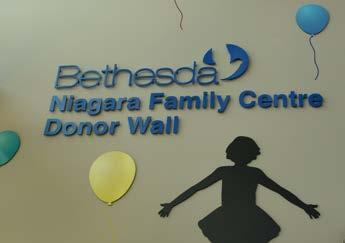
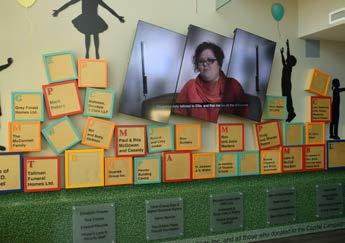
Donor wall in the Niagara Family Centre to acknowledge all those who generously supported this build
Room names in the Niagara Family Centre acknowledging those that generously donated to its build.
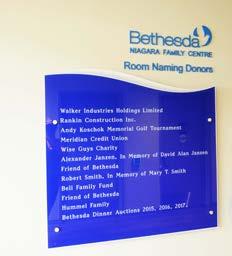
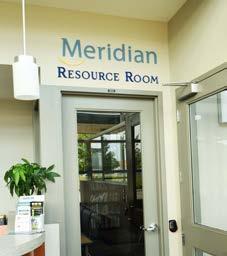
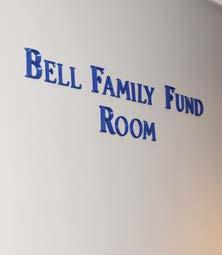
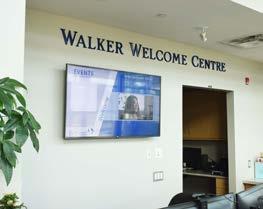
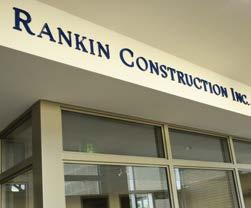


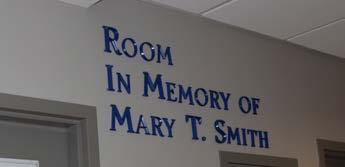

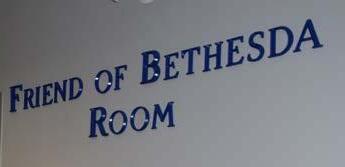
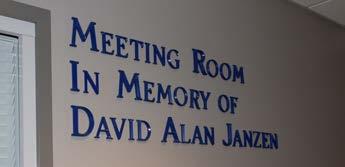
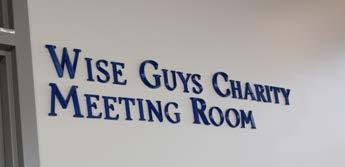
Incorporated May 26, 2000, Bethesda Residential Holdings Inc. owns and manages all real assets owned by Bethesda. Assets such as residential and commercial properties, and vehicles are included in this profile.
Since 1937 Bethesda has owed the Fly Road property with its 93 acres and various buildings. Beginning in 1986, with the purchase of 323 Scott Street, Bethesda has acquired the following:
Commercial
• 3280 Schmon Parkway, Thorold, Ontario (Corporate Offices)
• 3310 Schmon Parkway, Thorold, Ontario (Niagara Family Centre)
• 616 Cedar Street, Dunnville, Ontario (Witham Day Activities Centre)
• 550 Fennell Ave E, Hamilton, Ontario (Adult Clinical Services)
Residential
• 6 group homes in St. Catharines, Ontario
• 2 group homes in St. Ann’s, Ontario
• 1 group home in Niagara Falls, Ontario
• 18 group homes in West Lincoln, Ontario
Vehicles
• Bethesda Residential Holdings Inc. manages a fleet of 44 vehicles.
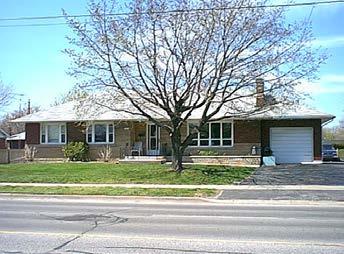
393 Linwell Sold St. Catharines and 3250 Schmon Unit 10 Purchased Thorold
Community Response Program and Maples Buildings Built Vineland
Wiebe House Purchased Vineland Main and Laundry Buildings Built Vineland Developmental Centre Built Vineland Maintenance Building Built Vineland Scott House Purchased St. Catharines
Ontario and Mississauga Purchased St. Catharines 2 Properties on Linwell Purchased St. Catharines Victoria Purchased St. Ann’s
Twenty Third Street Purchased Vineland Moote House Purchased St. Ann’s Wainfleet Home Purchased Wainfleet Crestdale House Purchased St. Catharines Grapeview Purchased St. Catharines
Quarry Ridge Purchased Vineland Willow Heights Purchased Vineland Schmon Centre Purchased Thorold 3663 Highway #6 Sold Hagersville Wainfleet Home Sold Wainfleet Lincoln Lane Purchased Vineland 944 Regional Road 27 Sold Wellandport 3250 Schmon, Unit 9, 10 Sold Thorold Niagara Family Centre Built Thorold Sunnylea Purchased Niagara Falls 944 Regional Road 27 Purchased Wellandport
3250 Schmon Unit 9 Purchased Thorold and 3663 Highway #6 purchased Hagersville Respite and Sweeney Built Vineland and Witham Centre Purchased Dunnville
Bethesda began as a family run operation in May 1932 Stratford, Ontario, moving to Vineland (Campden) in 1937. The operations started with two individuals in service and was funded through personal funds. In 1937, operations moved to Vineland (Campden) and in 1945 the Ontario Conference of Mennonite Brethren Churches took over operations with a formal budget of approximately $8,865. Since then, Bethesda has grown to serve more than 3,000 people with an operating budget of nearly $37,000,000.

$37,000,000
The following represents the various Presidents of the Bethesda Board over the years:
I.H Tiessen 1951 to 1952
F.C Peters 1952 to 1953
J.K Janzen 1954 to 1954
H.J Dick 1954 to 1955
C.J Rempel 1955 to 1971
D.E Warkentin 1971 to 1977
Walter Janzen 1977 to 1987
Jake Janzen 1987 to 1995
Archie Heide 1995 to 1996
David Wiebe 1996 to 2000
Walt Esau 2000 to 2006
Bill Jackson 2006 to present

From left: Gerhard Friesen, secretary of the Board and business manager of Bethesda; C.J. Rempel, Kitchener, board chairman; Rev. P.P. Doerksen, member of Alberta; A.A. Wiens, member for British Columbia; Re. D.D. Derksen, member for Manitoba; B.F. Redekop, member for South Saskatchewan; Rev. G.J. Epp, superintendent of Bethesda; Martin Duerksen, Beamsville, executive board member for Ontario; Gerhard Reimer, Virgil, vice-chairman. Absent is Dr. A.A. Dyck, member for North Saskatchewan.

1966
From left: Staff: Nick Braun, administrator, Isaak Block, chaplain. Board Members: John Janzen, Dr. Dave Warkentin, C.J. Rempel (chairman)
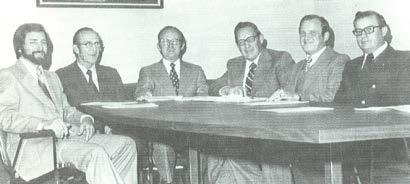
(Middle right) 1979
Back row: Erv Kruse, Werner Disck, Leonard Martens, Jake Janzen, Helmut Koop.
Front row: Dr. Archie Heide, Walter Janzen (chairman), Irene Fagundo, Jim Siebert
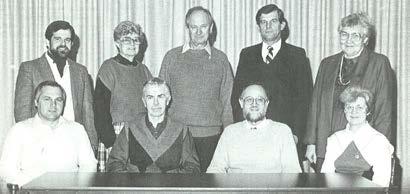
(Top left) 1977
From left: Board Members: Don Boese, Walter Janzen, Dr. Dave Warkentin. Staff: Nick Braun, administrator, Neil Pauls, chaplain, Jake Penner, director of nursing
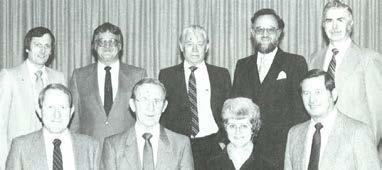
(Bottom left) 1987
Back row: Paul Wartman (coopted member), Irma Pauls, Ed Wiebe, Helen Isaak
Front row: Corny Durksen, Helmut Koop (vice chairman), Jake Janzen (chairman), Irene Fagundo
Absent: Jake Rempel
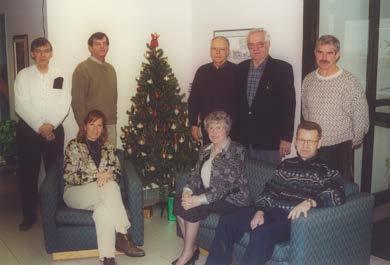
Front row: Deb Dueck, Bev Jamieson, Walt Esau
Back row: William Jackson, David Wiebe, John Derksen, Jake Boldt, David Froese
Front row: Josie Martens, Rudy Siemens, Marlene Goerz
Back row: John Hildebrand, Judy Willems, Doug Peters, Bill Jackson, Tom Wall, Walter Esau
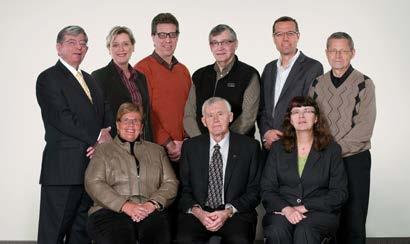
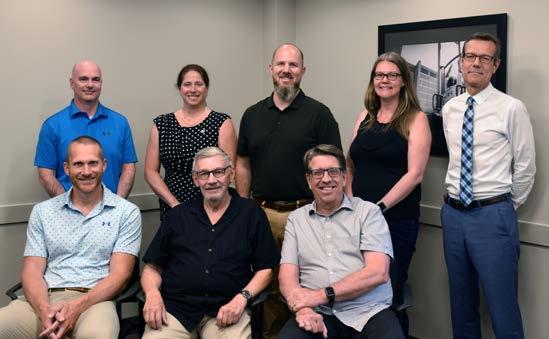
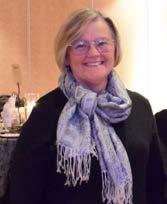
Missing:
The history of Bethesda is rich, full of blessings, and for that we are thankful. Bethesda’s history also helps us to plan for the future, to not forget those values and strong foundation upon which we are built.
Moving forward the organization desires to build on this foundation in an effort to:
• Refine our service models.
• Increase support options and expertise.
• Build on our community partnership in order to provide quality, seamless supports to people.
We invite our community to join with us, embracing the exciting future ahead of us.
